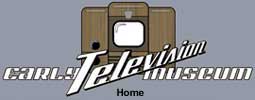Postwar Television The First Transvision Television SetAn Experience of Mark FlomenhoftThis story was provided to us by Charles Harper, who got it from Mark's brother Hugh. The Transvision kit we have in our collection is this set.
Mark must have forgiven Transvision, since he wrote this rather complimentary article in 1948 |
